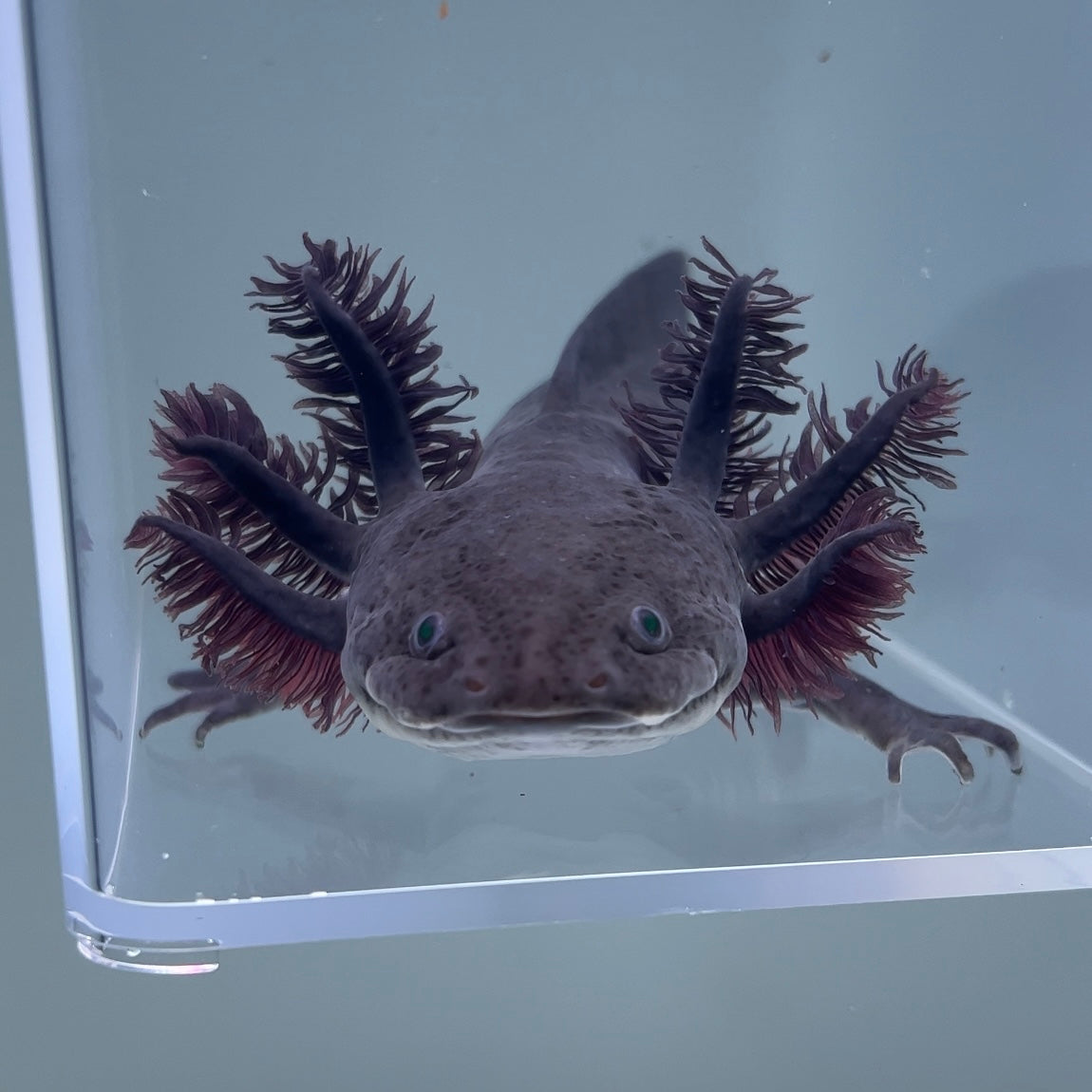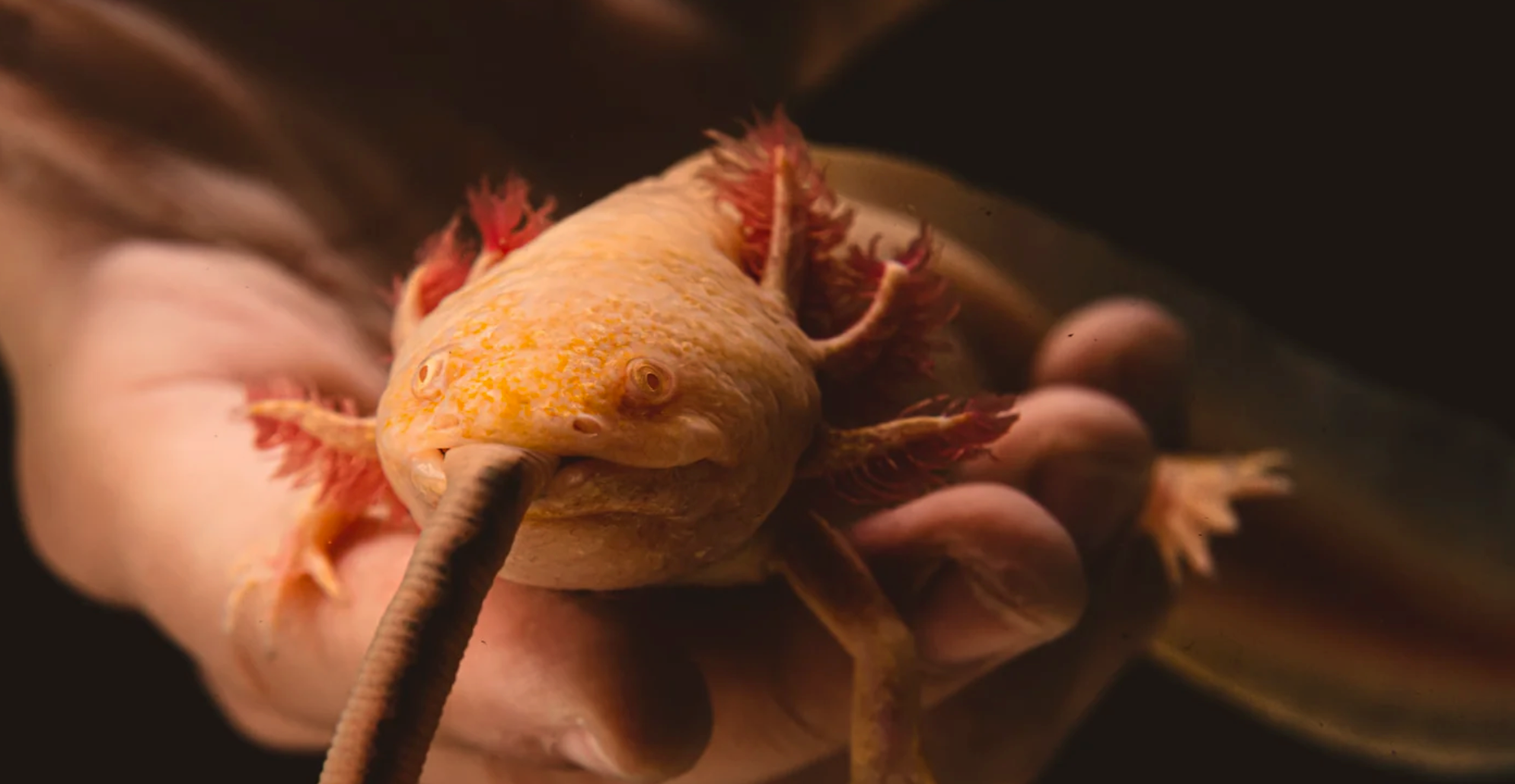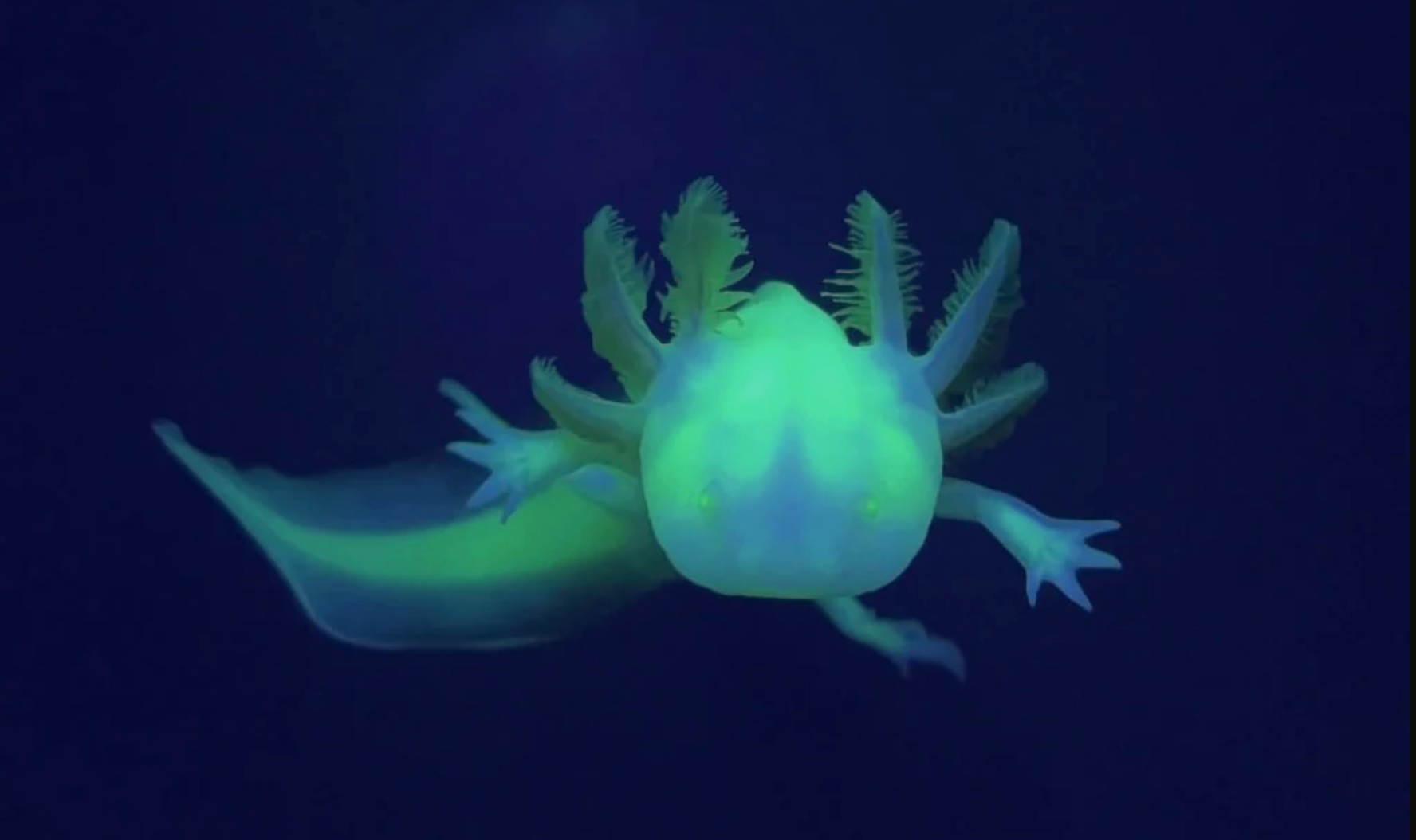1. External Gills – The Main Breathing Method
The most iconic feature of an axolotl is its feathery external gills, which protrude from both sides of its head. These gills allow the axolotl to extract oxygen directly from the water.
-
How it works: Blood flows through the gill filaments where gas exchange happens — oxygen is absorbed, and carbon dioxide is expelled.
-
Fun Fact: Axolotls can "wave" their gills to increase water flow and improve oxygen absorption.
✅ Axolotls use their gills as their primary breathing tool, especially in cold, oxygen-rich water.
2. Lungs – Yes, Axolotls Can Breathe Air!
Even though they are aquatic, axolotls possess rudimentary lungs and can surface to gulp air.
-
Why do they do this? In low-oxygen environments, an axolotl might rise to the surface and gulp air into its lungs.
-
Can axolotls drown? Technically yes, if their gills are severely damaged and they can't access the surface, they may suffocate.
🫁 This lung function is a fascinating throwback to their terrestrial amphibian cousins.
3. Cutaneous Respiration – Breathing Through Skin
Axolotls also breathe through their skin, a process called cutaneous respiration.
-
How effective is it? It’s supplementary but becomes more vital in high-oxygen or high-surface area environments (like tanks with gentle water flow).
-
Why does it work? Their thin, permeable skin allows oxygen and carbon dioxide to pass through the capillaries just below the surface.
🌊 This ability is especially important during early development or if other breathing methods are impaired.
How Does Water Quality Affect Breathing?
Poor water conditions—like low oxygen levels or high ammonia—can severely impact all three breathing systems. Signs of breathing stress include:
-
Rapid gill movement
-
Frequent surfacing
-
Curling gill tips
-
Floating behavior
💧 Tip: Use an air stone or sponge filter to ensure constant water oxygenation.
Can Axolotls Survive Out of Water?
While they have lungs and skin respiration, axolotls cannot live out of water. Unlike other salamanders, they do not undergo metamorphosis naturally and remain aquatic their entire lives.
🚫 Extended time on land can lead to stress, desiccation, and death.
Summary: How Do Axolotls Breathe?
| Breathing Method | Description | Primary Use |
|---|---|---|
| External Gills | Feathery gills filter oxygen from water | Main breathing method |
| Lungs | Gulp air at the surface | Backup in low-oxygen |
| Skin (Cutaneous) | Oxygen absorbed through skin | Supplemental |
Related Questions
✅ Can axolotls drown?
Yes, if they cannot access oxygen through gills, lungs, or skin.
✅ Do axolotls need an air pump?
Not always, but it helps keep oxygen levels stable in aquariums.
✅ Why are my axolotl’s gills shrinking?
Possible causes include poor water quality, high temperatures, or inadequate oxygen.
Final Thoughts
Axolotls are one of the only amphibians to maintain their juvenile features—like external gills—throughout their lives, thanks to a trait called neoteny. Understanding how they breathe is crucial to giving them a healthy, enriched life in captivity.
For more axolotl care guides, habitat tips, and breeding facts, check out our Axolotl Care Hub on Axolotl Planet (or your main site)!





Leave a comment
This site is protected by hCaptcha and the hCaptcha Privacy Policy and Terms of Service apply.